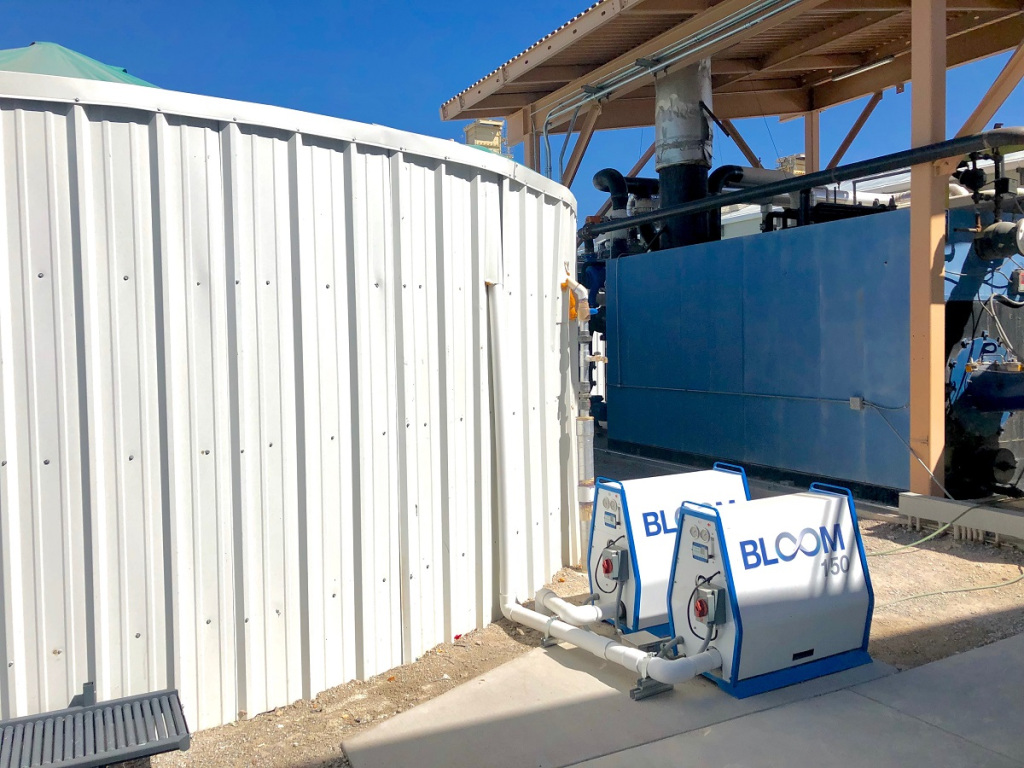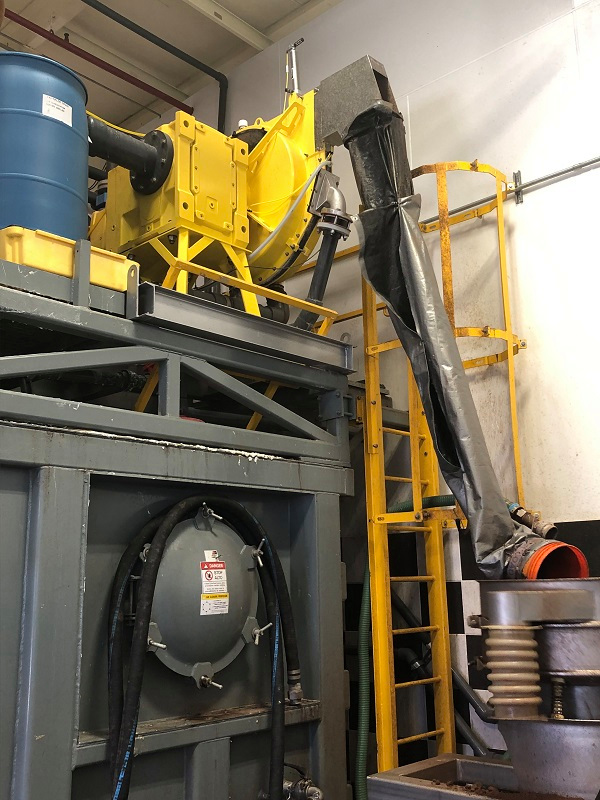
Elevate your enterprise information technologies and technique at Transform 2021.
Moleaer raised $9 million for “nanobubbles” that allow sustainable meals production, far better water therapy, and richer organic sources, the firm says.
In the previous year, Moleaer has grown quickly, tripling in size, and expects to continue to see that development going forward. The firm has more than 1,000 installations and is treating more than 225 million gallons of water per day in agriculture, aquaculture, surface water, and organic sources.
Moleaer currently has verified its technologies can improve berry size by 14% and the biomass of salmon by 22%, and it is working with NASA to develop crops in outer space. Before we say that Moleaer tends to make the major nanobubble technologies, even though, we need to clarify what nanobubbles are and why they’re a actually cool technologies.
What are nanobubbles?
Nanobubbles are particularly tiny bubbles that are invisible to the naked eye, roughly 2,500 instances smaller sized than a single grain of table salt. They stay suspended in the water for lengthy periods of time, acting like a battery that delivers oxygen constantly to the whole body of water. Moleaer’s nanobubble generators regulate and improve the oxygen levels in water supplies. As oxygen is consumed, the nanobubbles diffuse more oxygen into the option, sustaining the level of dissolved oxygen.
Nanobubbles provide a organic oxidant that can disinfect surfaces, destroy algae cells and toxins, and lessen the presence of pathogens in water, the firm says. Moleaer’s engineering group is partnering with universities, which includes Arizona State University, Clemson, Wageningen University, and Virginia Tech University, to validate new applications of nanobubble technologies.
Moleaer says its nanobubble technologies increases the throughput of wastewater therapy systems and wastewater high quality. It also reduces operational fees and chemical consumption for made water therapy improves water high quality for developing fruits, vegetables, and leafy greens and prevents the develop-up of illness and fungal bacteria in fish farming, according to the firm.
Its proprietary nanobubble technologies offers the highest verified oxygen transfer price in the aeration and gas-to-liquid transfer sector — 85% compared to the standard 1% to 3% — according to UCLA professor Michael Stenstrom. The firm says this higher oxygen transfer price enhances the productivity of industrial processes, from meals production to water therapy to resource recovery.
Its generators are removing damaging contaminants from water supplies enhancing fish and crop production and minimizing the operational fees and environmental influence of oil production and mining, Moleaer says.
In an e-mail to VentureBeat, Moleaer stated its patented technologies injects trillions of nano-sized gas bubbles into liquid to provide greatest-in-class gas-to-liquid transfer. The nanobubbles also possess many exclusive properties that provide further positive aspects like surface attraction, scouring, and oxidation to get rid of contaminants, handle pathogen development, avoid biofilm and mineral scale formation, and enhance the strong/oil/liquid separation processes.
Nanobubbles are 70 nanometers to 120 nanometers in size, and they can be formed utilizing any gas and injected into any liquid. Due to their size, nanobubbles exhibit exclusive properties that enhance various physical, chemical, and biological processes.
The Moleaer group
Moleaer is a California-based nanobubble technologies firm that was founded in 2016 with a mission to improve and defend water, meals, and organic sources. Warren Russell and Bruce Scholten — who have a combined 35 years of knowledge in the water, wastewater, and environmental services industries — began the firm.
It all began when they got collectively in a firm that operated in Abu Dhabi, UAE. After winning a tender for an offshore oil firm, they immediately recognized a important limitation to good results in a hot climate: sufficient dissolved oxygen in warm wastewater. From there, the two innovators started study approaches in which to dissolve gas into a liquid whilst maintaining dissolved oxygen suspended in sufficient quantities for longer periods of time. That’s when they found nanobubbles. These bubbles appeared to provide a way for them to assistance a biological therapy course of action in intense situations. The two then started working on creating a prototype — the foundation on which Moleaer was constructed. As they continued to create the gear, it exceeded all expectations. They had been capable to develop this out for distinct industries and applications.
In 2016, Scholten found a new strategy to generate billions of nanobubbles at an industrial scale. From there, the team’s discoveries lead to exponential development in university-led application study and nanobubble commercialization. Moleaer officially launched its initial nanobubble generator, focused on supplemental aeration for underperforming wastewater therapy plants.
Nicholas Dyner joined Moleaer as CEO in 2017, bringing 13 years of knowledge in scaling water therapy organizations globally. He previously led sales and advertising at NanoH2O/LG Chem Water Solutions and was a worldwide item manager at GE Water & Process Technologies.
Jeff Green, the executive chairman, has spent his profession founding and developing technologies corporations. He is an entrepreneur in the digital and sustainability sectors, possessing founded, run, and invested in many corporations, which includes Rusheen Capital Management, NanoH2O (acquired by LG Chem), and Stamps.com. In 2019, he was named to the Global Water Intelligence water technologies energy list as an investor and business enterprise executive.
The firm has established the nanobubble sector in the United States by creating what it claims to be the most price-efficient, effective, and scalable nanobubble technologies for municipal and industrial applications, and by being the initial nanobubble technologies firm to manufacture its goods in America. Moleaer says it is minimizing sector reliance on high priced and damaging chemical substances, hence cutting fees and escalating productivity.
The horticulture issue
Image Credit: Moleaer
With warming climates and serious droughts, farmers and growers are challenged to meet present and future meals demands. To adapt, farming is migrating to controlled, indoor environments, but these come with larger fees.
One option is nanobubble technologies, which Moleaer calls a price-efficient and effective strategy for enhancing and optimizing water high quality, escalating crop production and plant well being, and minimizing dangers from illness. Moleaer has two goods for the horticulture sector: the Neo Nanobubble Generator and the Bloom Nanobubble Generator.
Moleaer says it has effectively deployed its nanobubble generators at more than 350 buyer websites worldwide, which includes one hundred greenhouses.
Nanobubble generators

Image Credit: Moleaer
Moleaer has created 5 nanobubble systems, all constructed on the exact same patented nanobubble generator technologies, with distinct capacities and capabilities for distinct applications. These units are Bloom, Clear, Optimus, XTB, and Neo.
Moleaer says its nanobubble generators have elevated the dissolved oxygen transfer price into the water by up to 30 instances. Its technologies has led to increases in the yield of specialty crops by 25%, the firm says, and growers have decreased time-to-harvest by up to 25%. Nanobubble technologies is a more price-efficient option than standard approaches for oxygenating water in a greenhouse, and nanobubble generators provide a scalable and sustainable option to high priced chemical-intensive systems and processes, Moleaer says.
In agriculture, its technologies increases productivity by enhancing irrigation water high quality, resulting in 50% reduction of crop loss by illness and escalating crop yields and berry size by 20% and 14% respectively, the firm says. In salmon farming, Moleaer says its technologies has demonstrated a 22% improve in biomass production, a 60% reduction in oxygen usage, and a 42% reduction in electrical energy consumption. Other installations of Moleaer’s nanobubble technologies restore water bodies by eliminating damaging algae and pathogens as properly as escalating the recovery of organic sources.
Funding facts

Image Credit: Moleaer
S2G Ventures’ Oceans and Seafood Fund led the round, and it was joined by current investors ADM Capital’s Cibus Enterprise Fund and Energy Innovation Capital.
Moleaer will use the most up-to-date funding to expand the company’s worldwide industrial and manufacturing operations, advance its study and development of new nanobubble applications, and introduce new service offerings, which includes gear and water high quality monitoring and nanobubbles-as-a-service (NaaS).
CEO Dyner stated in a statement that the financing round — the biggest of its sort for a nanobubble tech firm — demonstrates the significance of revolutionary technologies that enhance the sustainability of meals production and water therapy. With challenges of meals insecurity and the developing deterioration of worldwide water high quality, industries are hunting for environmentally sound options to meet the challenges connected with climate transform and resource scarcity, he stated. Dyner stated the funding will enable the firm to accelerate its worldwide expansion to meet these wants, whether or not that is in meals, water, power, or other applications.
Larsen Mettler, S2G Ventures managing director, will join Moleaer’s board. In a statement, he stated the company’s nanobubble technologies has amazing possible to make agriculture and aquaculture more sustainable and productive by restoring the well being of aquatic systems and delivering meaningful advancements in water high quality. He stated he is thrilled to back Dyner and the Moleaer group as they scale the business enterprise to attain even higher influence across a number of components of the meals method.
Moleaer is one of the initial corporations to acquire funding from the newly formed Oceans and Seafood Fund, which is focused on advancing sustainable options for an sector that offers the main supply of protein to more than 3 billion men and women.
The Cibus Enterprise Fund, which focuses on addressing the challenges of sustainable meals provide and enhancing nutritious content — alongside Energy Innovation Capital, which appears to enhance operational efficiency and sustainability in power — elevated their investment in Moleaer.
Moleaer has 42 personnel and it has raised $20 million to date.






/cdn.vox-cdn.com/uploads/chorus_asset/file/25405124/unnamed__4_.png)